on TAIPEI Kil'n time in Taipei - Community Services Center
on TAIPEI Kil'n time in Taipei - Community Services Center
on TAIPEI Kil'n time in Taipei - Community Services Center
Create successful ePaper yourself
Turn your PDF publications into a flip-book with our unique Google optimized e-Paper software.
TRADiTi<strong>on</strong>Al ARTS<br />
A CENTRAL ATTRIBUTE OF<br />
CHINESE INK PAINTING IS LIFE<br />
(TRANSFORMATION, MOTION)<br />
Ink Pa<strong>in</strong>t<strong>in</strong>g Today<br />
(PART TWO)<br />
Chen Qikuan - Emoti<strong>on</strong>s (1976, Artist’s collecti<strong>on</strong>)<br />
text: Joan Stanley-Baker ©2010 March<br />
artiSt <strong>in</strong> reSidence ch<strong>in</strong>eSe culture univerSity, taipei<br />
Chen Qikuan - Seek (1990)<br />
Although recent generati<strong>on</strong>s have experienced<br />
‘abstract art’ primarily through the Abstract<br />
Expressi<strong>on</strong>ist movement that sprang up <strong>in</strong><br />
post-depressi<strong>on</strong> and post WWII New York <strong>in</strong><br />
the 1950s and 1960s, many of the Jewish American<br />
immigrant artists themselves were under the <strong>in</strong>fluence of<br />
Ch<strong>in</strong>ese Daoist th<strong>in</strong>k<strong>in</strong>g, and experiment<strong>in</strong>g <strong>in</strong> various<br />
ways with n<strong>on</strong>-asserti<strong>on</strong>, or wuwei - allow<strong>in</strong>g Nature<br />
to ‘take its own course’. Thus would Jacks<strong>on</strong> Pollock<br />
allow pa<strong>in</strong>t blobs to drip where they would by gravity,<br />
John Cage’s music was <strong>in</strong>formed by the random fibermark<strong>in</strong>gs<br />
<strong>on</strong> the score-paper, and so forth. Franz Kl<strong>in</strong>e<br />
and Mark Tobey had expressed outright their admirati<strong>on</strong><br />
for the abstract vigour of Ch<strong>in</strong>ese calligraphy. And as<br />
we see, their calligraphic abstracti<strong>on</strong>s do not equal those<br />
of a Wang Jiqian (C C Wang, 1907-2003) 王 己 千 ( 季 遷 )<br />
who had been liv<strong>in</strong>g am<strong>on</strong>gst them <strong>in</strong> New York City<br />
s<strong>in</strong>ce the 1940s, and whose current ‘abstract calligraphy<br />
pa<strong>in</strong>t<strong>in</strong>g,’ engendered as it is from decades of practice<br />
<strong>in</strong> brushwork-dom<strong>in</strong>ated Ch<strong>in</strong>ese calligraphy, is at <strong>on</strong>ce<br />
imbued with far more varied and deeper layers of mean<strong>in</strong>g<br />
and dynamics, <strong>in</strong> far more subtle brush-movements next<br />
to which the Western derivatives seem at <strong>on</strong>ce uncivilized<br />
and simplistic. These qualities rema<strong>in</strong> to date absent <strong>in</strong><br />
Western calligraphic works. In c<strong>on</strong>trast, the traditi<strong>on</strong>derived<br />
calligraphy abstracted by a C C Wang, or rendered<br />
more pa<strong>in</strong>terly by Taiwan’s D<strong>on</strong>g Yangzi, impart not<br />
<strong>on</strong>ly visual stimuli but mental and emoti<strong>on</strong>al <strong>on</strong>es as<br />
18<br />
june 2010



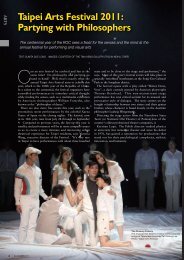
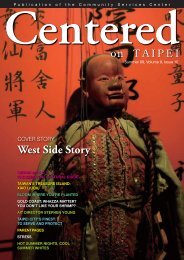



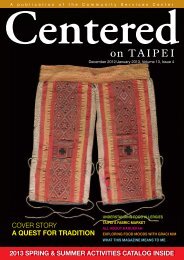

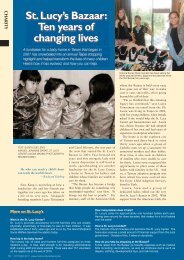

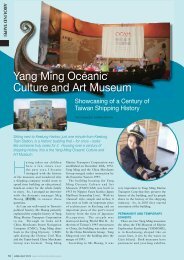



![Rice 米 [mi] - Community Services Center](https://img.yumpu.com/22967832/1/184x260/rice-mi-community-services-center.jpg?quality=85)